Influence of TiO2 Nanoparticles on the Physical, Mechanical, and Structural Characteristics of Cementitious Composites with Recycled Aggregates
Abstract
1. Introduction
2. Materials and Methods
2.1. Raw Materials
- -
- Portland cement CEM I 52.5 R was purchased commercially and is characterized by a content of min. 95% Portland clinker and a compressive strength at 28 days of minimum 52.5 N/mm2 and maximum 62.5 N/mm2.
- -
- MasterEase 5009 superplasticizer/strong water-reducing additive was purchased commercially.
- -
- TiO2 nanoparticles of type AEROXIDE® TiO2 P25, according to the manufacturer’s technical data sheet, were characterized by a purity of 99.5%, containing more than 70% anatase crystalline phase.
- -
- Natural aggregates as well as aggregates from recycled waste were characterized by determining the particle size distribution curve according to EN 933-1 [53], bulk density and intergranular porosity according to EN 1097-3 [54], and true mass and water absorption coefficient according to EN 1097-6 [55], as shown in Figure 1, Figure 2, Figure 3 and Figure 4. Additionally, for blast furnace slag (GBA), the oxide composition was determined by X-ray fluorescence (XRF) analysis (Table 1). The textolite slag was analyzed for residual metal content (Table 2) according to the methodology indicated in specific standard documents [56,57,58,59].
2.2. Production of Cementitious Composites
2.3. Analysis of the Physical–Mechanical Performances of Cementitious Composites
2.4. Microstructural Analysis of Cementitious Composites
3. Results and Discussions
3.1. Influence of the Addition of TiO2 Nanoparticles on the Physical–Mechanical Characteristics of Cementitious Composites
- -
- The addition of NTs leads to the densification of the composites. This increase in bulk density occurs in all composites, regardless of whether natural aggregates have been substituted with recycled waste aggregates.
- -
- The most significant increases in bulk density are recorded for the cases where NAs were not substituted with recycled aggregates (7.40–4.66% compared to the sample without NT content, R1-0). However, it can be observed that this increase in density is lower in the case of compositions with a higher addition of NTs.
- -
- The smallest increases in bulk density are recorded for the cases where NAs were substituted with RTAs (0.24–1.41% compared to the NT-free sample, R5-0). This time, it was observed that this increase in density could not be correlated with the amount of NTs introduced as an addition. This non-uniform variation in the parameter could be interpreted as a sign of the inhomogeneity of the distribution of the components, i.e., the difficulty of homogeneous distribution in the composite matrix, on the one hand of RTAs and on the other hand of NTs, concomitant with the inhomogeneity of the formation of cement hydration compounds and pore distribution.
- -
- Regarding the evolution of the parameter for the other recycled aggregate types, in the case of RGAs, there is an increase of 0.88–1.99% compared to the sample without NTs (R2-0); in the case of RBAs, the increase is within 2.11–6.92% compared to the sample without NTs (R3-0); and in the case of GBAs, the increase is within 3.47–3.92% compared to the sample without NTs (R4-0).
3.2. Influence of TiO2 Nanoparticle Addition on the Structure and Microstructure of Cementitious Composites
4. Conclusions
- -
- The introduction of NTs into the composite mass, regardless of the type of aggregates used, has the effect of increasing the apparent density in the hardened state.
- -
- The introduction of NTs into the composite mass, regardless of the type of aggregates used, has the effect of increasing the compressive strength, with a maximum obtained for 3% or 4% NTs, with values between 43.3 and 70.13 N/mm2, depending on the nature of the recycled aggregates substituted for the natural aggregates.
- -
- The introduction of NTs into the composite mass, regardless of the type of aggregates used, has the effect of increasing the flexural strength, with a maximum obtained for 3% or 4% NTs, with values between 8.24 and 10.47 N/mm2, depending on the nature of the recycled aggregates substituted for the natural aggregates.
- -
- The introduction of NTs into the composite mass, regardless of the type of aggregates used, has the effect of increasing wear resistance, with a maximum obtained for 3% or 4% NTs, with values between 0.03 and 0.11 kg/m2min0.5, depending on the nature of the recycled aggregates substituted for the natural aggregates.
- -
- The introduction of NTs into the composite mass, regardless of the type of aggregates used, has the effect of reducing water absorption by capillarity. In some cases, if recycled aggregates replacing natural aggregates induce an effect of increasing co-efficient water absorption, adding NTs can reduce or even cancel this effect.
- -
- The SEM micrographs of samples R1-3, R2-3, R3-3, R4-3, and R5-3 after 28 days show different microstructures, such as a predominantly reticulated CSH gel in the NA sample with 3% NTs, attributed to TiO2 acting as a nucleating agent, accelerating cement hydration; a similar trend is observed for RGA, RBA, GBA, and RTA samples, with variations in ITZ, cohesion, and predominant hydration products, highlighting the strong influence of TiO2 nanoparticles on the hydration process. The EDX spectra complete the TiO2 nanoparticle distribution image across the investigated areas, confirming the even distribution of the nanoparticles across the sample and therefore indicating a homogenous distribution of TiO2 in the cementitious composites.
- -
- The XRD patterns of the samples with and without NTs reveal characteristic peaks of ordinary Portland cement (such as peaks corresponding to calcite, aluminoferrite, and portlandite) and distinct peaks for anatase and rutile phases of TiO2 nanoparticles in the samples R1-3 to R5-3, indicating a lack of chemical interaction with the cementitious matrix and the prevalence of the anatase phase in 3% NT-containing samples.
Author Contributions
Funding
Institutional Review Board Statement
Informed Consent Statement
Data Availability Statement
Conflicts of Interest
References
- Xue, C.; Qiao, H.; Cao, H.; Feng, Q.; Li, Q. Analysis on the strength of cement mortar mixed with construction waste brick powder. Adv. Civ. Eng. 2021, 2021, 8871280. [Google Scholar] [CrossRef]
- Chen, Y.Z. Comparison of policy about construction waste resource utilization in China & abroad. Archit. Technol. 2019, 50, 342–345. [Google Scholar]
- Abuzaid, E.K.M.; Al-Bayati, J.K.; Mohammed, M.H. Behavior of Reinforced Concrete Beams Containing Waste Crushed Con-crete and Bricks. Civ. Environ. Eng. 2022, 18, 438–447. [Google Scholar] [CrossRef]
- Silva, F.A.N.; Delgado, J.M.P.; Azevdo, A.C.; Lima, A.G.B.; Vieira, C.S. Preliminary Analysis of the Use of Construction Waste to Replace Conventional Aggregates in Concrete. Buildings 2021, 11, 81. [Google Scholar] [CrossRef]
- Yang, I.H.; Park, J.; Kim, K.C.; Lee, H. Structural Behavior of Concrete Beams Containing Recycled Coarse Aggregates under Flexure. Adv. Mater. Sci. Eng. 2020, 2020, 8037131. [Google Scholar] [CrossRef]
- Etxeberria, M.; Mari, A.R.; Vazquez, E. Recycled aggregate concrete as structural material. Mater. Struct. 2007, 40, 529–541. [Google Scholar] [CrossRef]
- Pavlu, T.; Fortova, K.; Divis, J.; Hajek, P. The utilization of recycled masonry aggregate and recycled EPS for concrete blocks for mortarless masonry. Materials 2019, 12, 1923. [Google Scholar] [CrossRef] [PubMed]
- Pacheco-Torgal, F.; Jalali, S. Compressive strength and durability properties of ceramic wastes based concrete. Mater. Struct. 2011, 44, 155–167. [Google Scholar] [CrossRef]
- Yang, J.; Du, Q.; Bao, Y. Concrete with recycled concrete aggregate and crushed clay bricks. Constr. Build. Mater. 2011, 25, 1935–1945. [Google Scholar] [CrossRef]
- Nepomuceno, M.C.S.; Isidoro, R.A.S.; Catarino, J.P.G. Mechanical performance evaluation of concrete made with recycled ceramic coarse aggregates from industrial brick waste. Constr. Build. Mater. 2018, 165, 284–294. [Google Scholar] [CrossRef]
- Nematzadeh, M.; Dashti, J.; Ganjavi, B. Optimizing compressive behavior of concrete containing fine recycled refractory brick aggregate together with calcium aluminate cement and polyvinyl alcohol fibers exposed to acidic environment. Constr. Build. Mater. 2018, 164, 837–849. [Google Scholar] [CrossRef]
- Khalaf Fouad, M.; DeVenny Alan, S. Properties of New and Recycled Clay Brick Aggregates for Use in Concrete. J. Mater. Civ. Eng. 2005, 17, 456–464. [Google Scholar] [CrossRef]
- Devenny, A.; Khalaf, F.M. The use of crushed brick as coarse aggregate in concrete. Mason. Int. 1999, 12, 81–84. [Google Scholar]
- Uddin, M.T.; Mahmood, A.H.; Kamal, M.D.R.I.; Yashin, S.M.; Zihan, Z.U.A. Effects of maximum size of brick aggregate on properties of concrete. Constr. Build. Mater. 2017, 134, 713–726. [Google Scholar] [CrossRef]
- Cavalline, T.L.; Weggel, D.C. Recycled brick masonry aggregate concrete: Use of brick masonry from construction and demolition waste as recycled aggregate in concrete. Struct. Surv. 2013, 31, 160–180. [Google Scholar] [CrossRef]
- Cachim, P.B. Mechanical properties of brick aggregate concrete. Constr. Build. Mater. 2009, 23, 1292–1297. [Google Scholar] [CrossRef]
- Khatib, J.M. Properties of concrete incorporating fine recycled aggregate. Cem. Concr. Res. 2005, 35, 763–769. [Google Scholar] [CrossRef]
- Lee, G.; Poon, C.S.; Wong, Y.L.; Ling, T.C. Effects of recycled fine glass aggregates on the properties of dry–mixed concrete blocks. Constr. Build. Mater. 2013, 38, 638–643. [Google Scholar] [CrossRef]
- Ling, T.C.; Poon, C.S. Properties of architectural mortar prepared with recycled glass with different particle sizes. Mater. Des. 2011, 32, 2675–2684. [Google Scholar] [CrossRef]
- Lee, G.; Ling, T.C.; Wong, Y.L.; Poon, C.S. Effects of crushed glass cullet sizes, casting methods and pozzolanic materials on ASR of concrete blocks. Constr. Build. Mater. 2011, 25, 2611–2618. [Google Scholar] [CrossRef]
- Özkan, Ö.; Yüksel, İ. Studies on mortars containing waste bottle glass and industrial by-products. Constr. Build. Mater. 2008, 22, 1288–1298. [Google Scholar] [CrossRef]
- Shi, C.; Day, R.L. Early strength development and hydration of alkali-activated blast furnace slag/fly ash blends. Adv. Cement Res. 1999, 11, 189–196. [Google Scholar] [CrossRef]
- Pizoń, J.; Gołaszewski, J.; Alwaeli, M.; Szwan, P. Properties of concrete with recycled concrete aggregate containing metallurgical sludge waste. Materials 2020, 13, 1448. [Google Scholar] [CrossRef] [PubMed]
- European Parliament. Directive 2002/96/EC of the European Parliament and of the Council of 27 January 2003 on Waste Electrical and Electronic Equipment (WEEE)—Joint Declaration of the European Parliament, the Council and the Commission relating to Article 9. Off. J. Eur. Union 2003, L37, 24–39. [Google Scholar]
- Premur, V.; Anić Vučinić, A.; Vujević, D.; Bedeković, G. The possibility for environmental friendly recycling of printed circuit boards. J. Sustain. Dev. Energy Water Environ. Syst. 2016, 4, 14–22. [Google Scholar] [CrossRef]
- Niu, X.; Li, Y. Treatment of waste printed wire boards in electronic waste for safe disposal. J. Hazard. Mater. 2007, 145, 410–416. [Google Scholar] [CrossRef] [PubMed]
- Ganesh, S.; Danish, P.; Bhat, K.A. Utilization of waste printed circuit board powder in concrete over conventional concrete. Mater. Today Proc. 2021, 42, 745–749. [Google Scholar] [CrossRef]
- Santhanam, N.; Ramesh, B.; Pohsnem, F.K. Concrete blend with E-waste plastic for sustainable future. Mater. Today Proc. 2020, 22, 959–965. [Google Scholar] [CrossRef]
- Mou, P.; Xiang, D.; Duan, G. Products Made from Nonmetallic Materials Reclaimed from Waste Printed Circuit Boards. Tsinghua Sci. Technol. 2007, 12, 276–283. [Google Scholar] [CrossRef]
- Priyan, M.V.; Annadurai, R.; Onyelowe, K.C.; Alaneme, G.U.; Giri, N.C. Recycling and sustainable applications of waste printed circuit board in concrete application and validation using response surface methodology. Sci. Rep. 2023, 13, 16509. [Google Scholar] [CrossRef]
- Vishnupriyan, M.; Annadurai, R. A study on the macro-properties of PCB fiber-reinforced concrete from recycled electronic waste and validation of results using RSM and ANN. Asian J. Civ. Eng. 2023, 24, 1667–1680. [Google Scholar] [CrossRef]
- Bica, B.O.; de Melo, J.V.S. Concrete blocks nano-modified with zinc oxide (ZnO) for photocatalytic paving: Performance com-parison with titanium dioxide (TiO2). Constr. Build. Mater. 2020, 252, 119120. [Google Scholar] [CrossRef]
- Staub de Melo, J.V.; Trichês, G. Study of the influence of nano-TiO2 on the properties of Portland cement concrete for application on road surfaces. Road Mater. Pavement Des. 2018, 19, 1011–1026. [Google Scholar] [CrossRef]
- Reches, Y. Nanoparticles as concrete additives: Review and perspectives. Constr. Build. Mater. 2018, 175, 483–495. [Google Scholar] [CrossRef]
- De Matos, P.; Zat, T.; Corazza, K.; Fensterseifer, E.; Sakata, R.; Mohamad, G.; Rodríguez, E. Effect of TiO2 Nanoparticles on the Fresh Performance of 3D-Printed Cementitious Materials. Materials 2022, 15, 3896. [Google Scholar] [CrossRef] [PubMed]
- Senff, L.; Hotza, D.; Lucas, S.; Ferreira, V.M.; Labrincha, J.A. Effect of nano-SiO2 and nano-TiO2 addition on the rheological behavior and the hardened properties of cement mortars. Mater. Sci. Eng. A 2012, 532, 354–361. [Google Scholar] [CrossRef]
- Senff, L.; Tobaldi, D.M.; Lemes-Rachadel, P.; Labrincha, J.A.; Hotza, D. The influence of TiO2 and ZnO powder mixtures on photocatalytic activity and rheological behavior of cement pastes. Constr. Build. Mater. 2014, 65, 191–200. [Google Scholar] [CrossRef]
- Casagrande, C.A.; Repette, W.L.; Hotza, D. Effect of environmental conditions on degradation of NOx gases by photocatalytic nanotitania-based cement mortars after long-term hydration. J. Clean. Prod. 2020, 274, 123067. [Google Scholar] [CrossRef]
- Joshaghani, A.; Balapour, M.; Mashhadian, M.; Ozbakkaloglu, T. Effects of nano-TiO2, nano-Al2O3, and nano-Fe2O3 on rheology, mechanical and durability properties of self-consolidating concrete (SCC): An experimental study. Constr. Build. Mater. 2020, 245, 118444. [Google Scholar] [CrossRef]
- Jalal, M.; Fathi, M.; Farzad, M. Effects of fly ash and TiO2 nanoparticles on rheological, mechanical, microstructural and thermal properties of high strength self compacting concrete. Mech. Mater. 2013, 61, 11–27. [Google Scholar] [CrossRef]
- Jayapalan, A.R.; Lee, B.Y.; Fredrich, S.M.; Kurtis, K.E. Influence of additions of anatase TiO2 nanoparticles on earlyage properties of cement-based materials. Transp. Res. Rec. 2010, 2141, 41–46. [Google Scholar] [CrossRef]
- Lackhoff, M.; Prieto, X.; Nestle, N.; Dehn, F.; Niessner, R. Photocatalytic activity of semiconductor-modified cement—Influence of semiconductor type and cement ageing. Appl. Catal. B Environ. 2023, 43, 205–216. [Google Scholar] [CrossRef]
- Nazari, A.; Riahi, S. The effect of TiO2 nanoparticles on water permeability and thermal and mechanical properties of high strength self-compacting concrete. Mater. Sci. Eng. A 2010, 528, 756–763. [Google Scholar] [CrossRef]
- Nazari, A.; Riahi, S. The effects of TiO2 nanoparticles on physical, thermal and mechanical properties of concrete using ground granulated blast furnace slag as binder. Mater. Sci. Eng. A 2011, 528, 2085–2092. [Google Scholar] [CrossRef]
- Janczarek, M.; Klapiszewski, Ł.; Jędrzejczak, P.; Klapiszewska, I.; Ślosarczyk, A.; Jesionowski, T. Progress of functionalized TiO2-based nanomaterials in the construction industry: A comprehensive review. Chem. Eng. J. 2022, 430, 132062. [Google Scholar] [CrossRef]
- Cerro-Prada, E.; Manso, M.; Torres, V.; Soriano, J. Microstructural and photocatalytic characterization of cement-paste sol-gel synthesized titanium dioxide. Front. Struct. Civ. Eng. 2016, 10, 189–197. [Google Scholar] [CrossRef]
- Wang, L.; Zhang, H.; Gao, Y. Effect of TiO2 nanoparticles on physical and mechanical properties of cement at low temperatures. Adv. Mater. Sci. Eng. 2018, 2018, 8934689. [Google Scholar] [CrossRef]
- Zhang, R.; Cheng, X.; Hou, P.; Ye, Z. Influences of nano-TiO2 on the properties of cement based materials: Hydration and drying shrinkage. Constr. Build. Mater. 2015, 81, 35–41. [Google Scholar] [CrossRef]
- Gopalakrishnan, R.; Vignesh, B.; Jeyalakshmi, R. Mechanical, electrical and microstructural studies on nano-TiO2 admixtured cement mortar cured with industrial wastewater. Eng. Res. Express 2020, 2, 025010. [Google Scholar] [CrossRef]
- Ng, D.S.; Paul, S.C.; Anggraini, V.; Kong, S.Y.; Qureshi, T.S.; Rodriguez, C.R.; Šavija, B. Influence of SiO2, TiO2 and Fe2O3 nanoparticles on the properties of fly ash blended cement mortars. Constr. Build. Mater. 2020, 258, 119627. [Google Scholar]
- Bianchini, G.; Marrocchino, E.; Tassinari, R.; Vaccaro, C. Recycling of construction and demolition waste materials: A chemical–mineralogical appraisal. Waste Manag. 2005, 25, 149–159. [Google Scholar] [CrossRef] [PubMed]
- Florean, C.; Vermesan, H.; Gabor, T.; Neamțu, B.V.; Thalmayer, G.; Corbu, O.; Lazarescu, A.V.; Hegyi, A.; Csapai, A. Possibilities for Conserving Natural Resources and the Environment Through the use of Recycled Waste Aggregates as a Substitute for Natural Aggregates in Cementitious Composites. Int. J. Conserv. Sci. 2024, 15, 527–546. [Google Scholar] [CrossRef]
- SR EN 933-1:2012; Tests to Determine the Geometrical Characteristics of Aggregates. Part 1: Determination of Grain Size. Granulometric Analysis by Sieving. ASRO: Bucharest, Romania, 2012. (In Romanian)
- SR EN 1097-3:2002; Tests to Determine the Mechanical and Physical Characteristics of Aggregates. Part 3: Methods for the de-Termination of Bulk Density and Intergranular Porosity. ASRO: Bucharest, Romania, 2002.
- SR EN 1097-6:2022; Tests to Determine the Mechanical and Physical Characteristics of Aggregates. Part 6: Determination of Density and Water Absorption of Granules. ASRO: Bucharest, Romania, 2022. (In Romanian)
- SR EN 14582:2017; Waste Characterisation. Halogen and Sulphur Content. Burning in Closed Systems Containing Oxygen and Methods of Determination. ASRO: Bucharest, Romania, 2017. (In Romanian)
- SR EN ISO 15586:2004; Water Quality. Determination of Trace Elements by Graphite Furnace Atomic Absorption Spectrometry. ASRO: Bucharest, Romania, 2004. (In Romanian)
- EPA 7000B:2007; Method 7000B Flame Atomic Absorption Spectrophotometry. U.S. Environmental Protection Agency: Washington, DC, USA, 2007.
- SR ISO 11047:1999; Soil Quality. Determination of Cadmium, Chromium, Cobalt, Copper, Lead, Manganese, Nickel and Zinc in Soil Extracts in Royal Water. Methods by Flame Atomic Absorption Spectrometry and Electrothermal Atomization. ASRO: Bucharest, Romania, 1999. (In Romanian)
- Shekari, A.H.; Razzaghi, M.S. Influence of nano particles on durability and mechanical properties of high performance concrete. Procedia Eng. 2011, 14, 3036–3041. [Google Scholar] [CrossRef]
- Liu, L.; Jaramillo-Botero, A.; Goddard, W.A., III; Sun, H. Development of a ReaxFF reactive force field for ettringite and study of its mechanical failure modes from reactive dynamics simulations. J. Phys. Chem. A 2012, 116, 3918–3925. [Google Scholar] [CrossRef] [PubMed]
- Aliabdo, A.A.; Abd Elmoaty, M.; Aboshama, A.Y. Utilization of waste glass powder in the production of cement and concrete. Constr. Build. Mater. 2016, 124, 866–877. [Google Scholar] [CrossRef]
- Ibrahim, K.I.M. The effect of using glass powder as cement substitution and its mixing method on the concrete characteristics. J. Build. Pathol. Rehabil. 2023, 8, 27. [Google Scholar] [CrossRef]
- Chen, J.; Kou, S.; Poon, C. Hydration and properties of nano-TiO2 blended cement composites. Cem. Concr. Compos. 2012, 34, 642–649. [Google Scholar] [CrossRef]
- Mohseni, E.; Ranjbar, M.M.; Tsavdaridis, K.D. Durability properties of highperformance concrete incorporating nano-TiO2 and fly ash. Am. J. Appl. Sci. 2015, 8, 519–526. [Google Scholar] [CrossRef]
- Yu, X.; Kang, S.; Long, X. Compressive strength of concrete reinforced by TiO2 nanoparticles. AIP Conf. Proc. 2018, 2036, 030006. [Google Scholar]
- SR EN 196-3:2017; Methods of Testing Cements. Part 3: Determination of Setting Time and Stability. ASRO: Bucharest, Romania, 2017. (In Romanian)
- Noorvand, H.; Ali, A.A.A.; Demirboga, R.; Farzadnia, N.; Noorvand, H. Incorporation of nano TiO2 in black rice husk ash mortars. Constr. Build. Mater. 2013, 47, 1350–1361. [Google Scholar] [CrossRef]
- NE 012-1:2022; Standard for the Production and Execution of Concrete, Reinforced Concrete and Prestressed Concrete Works—Part 1: Concrete Production. Ministry of Development, Public Works and Administration: Bucharest, Romania, 2022. (In Romanian)
- SR EN 1015-18:2003; Test Methods for Masonry Mortars. Part 18: Determination of the Coefficient of Water Absorption due to the Capillary Action of Hardened Mortar. ASRO: Bucharest, Romania, 2003. (In Romanian)
- SR EN 1015-10:2002; Test Methods for Masonry Mortars. Part 10: Determination of Bulk Density of Hardened Mortar. ASRO: Bucharest, Romania, 2002. (In Romanian)
- SR EN 1015-11:2020; Test Methods for Masonry Mortars. Part 11: Determination of Flexural Strength of Hardened Mortar. ASRO: Bucharest, Romania, 2020. (In Romanian)
- SR EN 1338:2004; Concrete Pavers. Conditions and Test Methods. ASRO: Bucharest, Romania, 2004. (In Romanian)
- Nazari, A.; Riahi, S. TiO2 nanoparticles effects on physical, thermal and mechanical properties of self-compacting concrete with ground granulated blast furnace slag as binder. Energy Build. 2011, 43, 995–1002. [Google Scholar] [CrossRef]
- Salemi, N.; Behfarnia, K.; Zaree, S.A. Effect of nanoparticles on frost durability of concrete. Asian J. Civ. Eng. 2014, 15, 411–420. [Google Scholar]
- Behfarnia, K.; Keivan, A.; Keivan, A. The effects of TiO2 and ZnO nanoparticles on physical and mechanical properties of normal concrete. Asian J. Civ. Eng. 2013, 14, 517–531. [Google Scholar]
- Fujishima, A.; Zhang, X.; Tryk, D.A. TiO2 photocatalysis and related surface phenomena. Surf. Sci. Rep. 2008, 63, 515–582. [Google Scholar] [CrossRef]
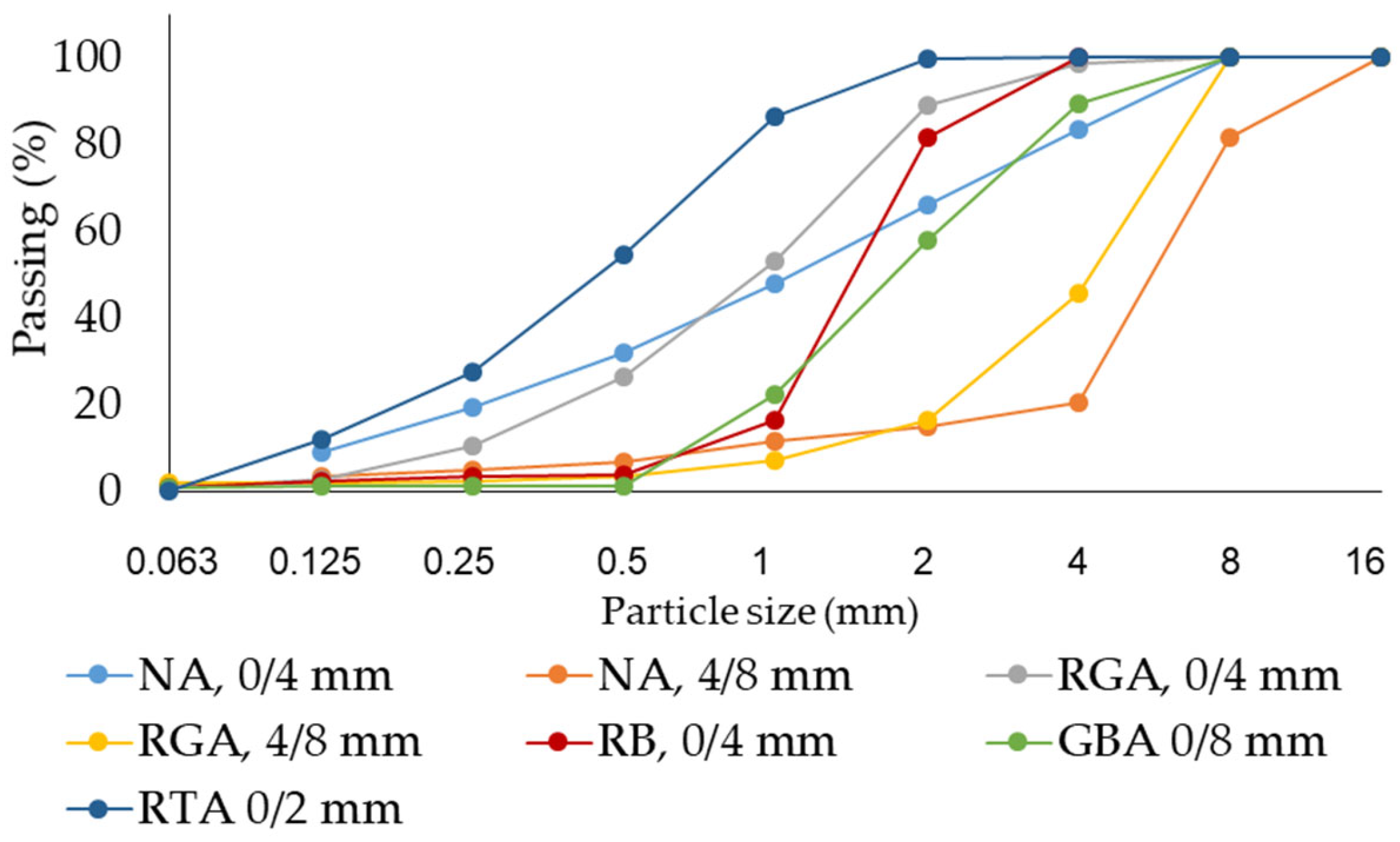
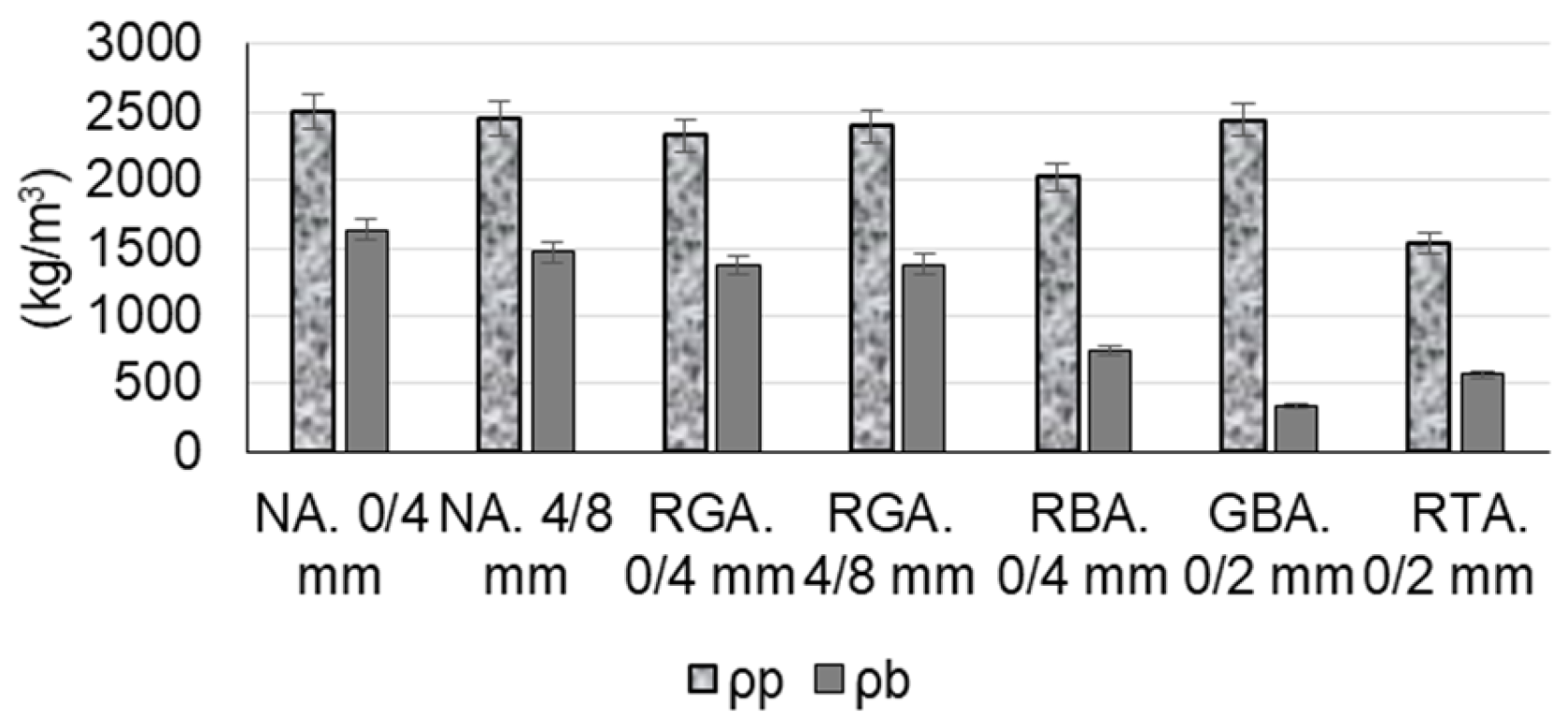
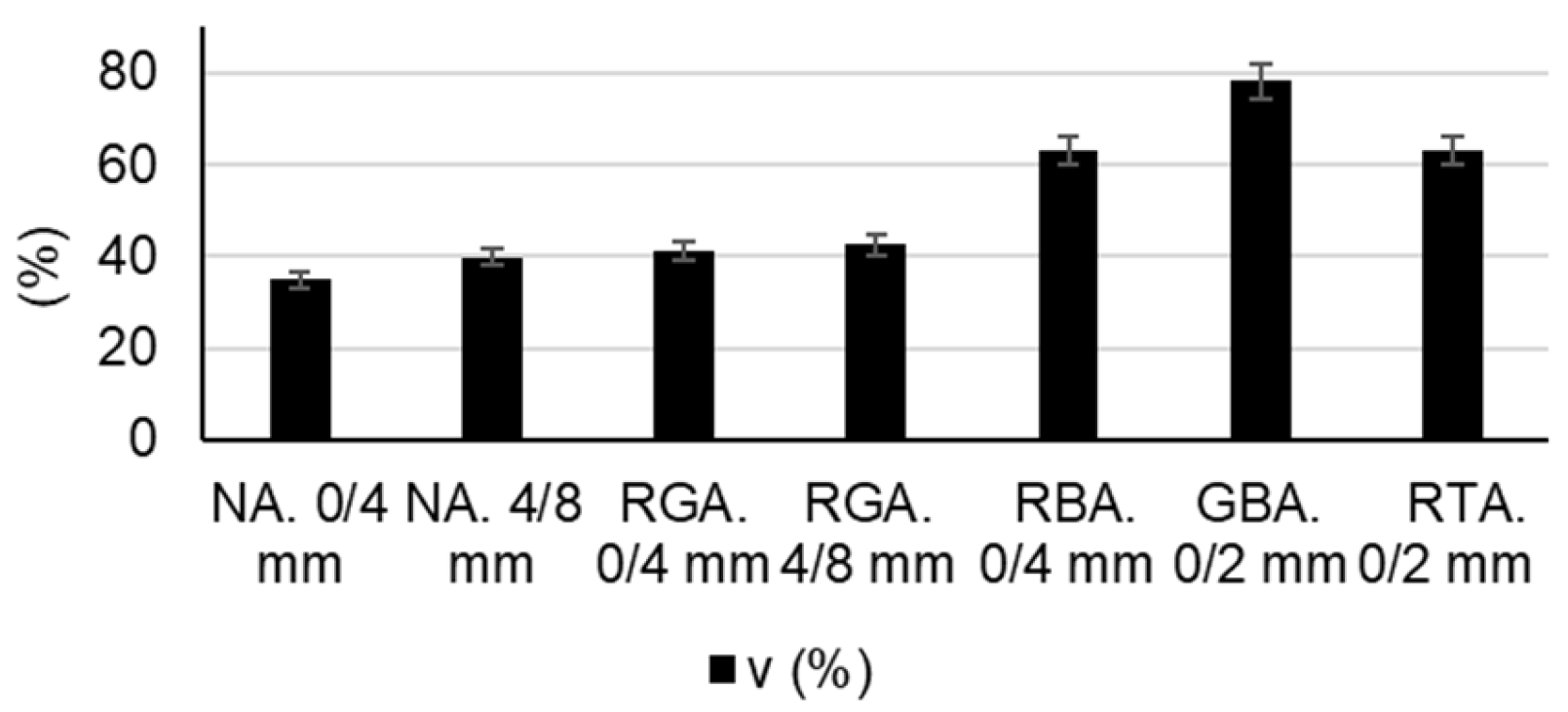












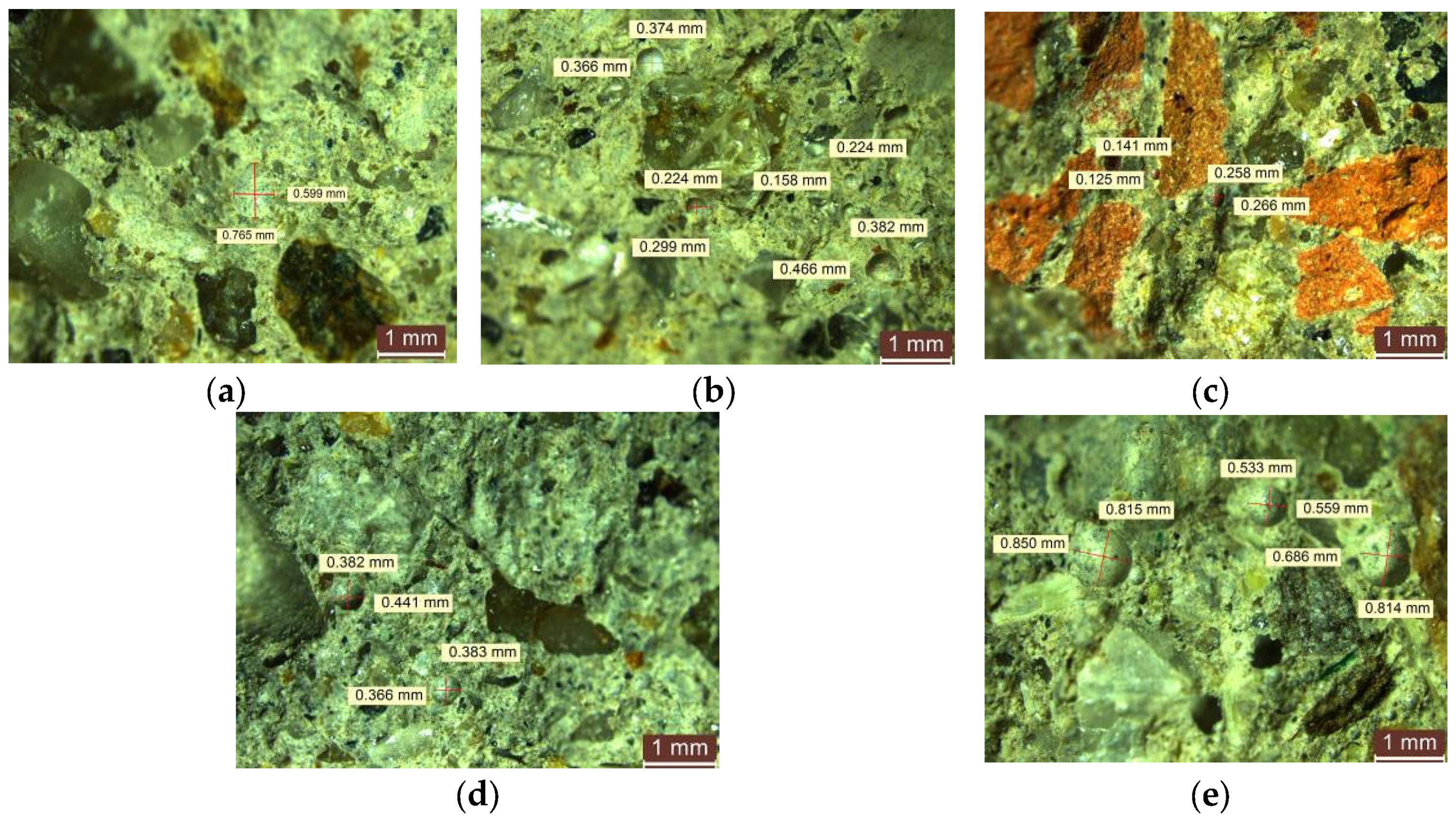
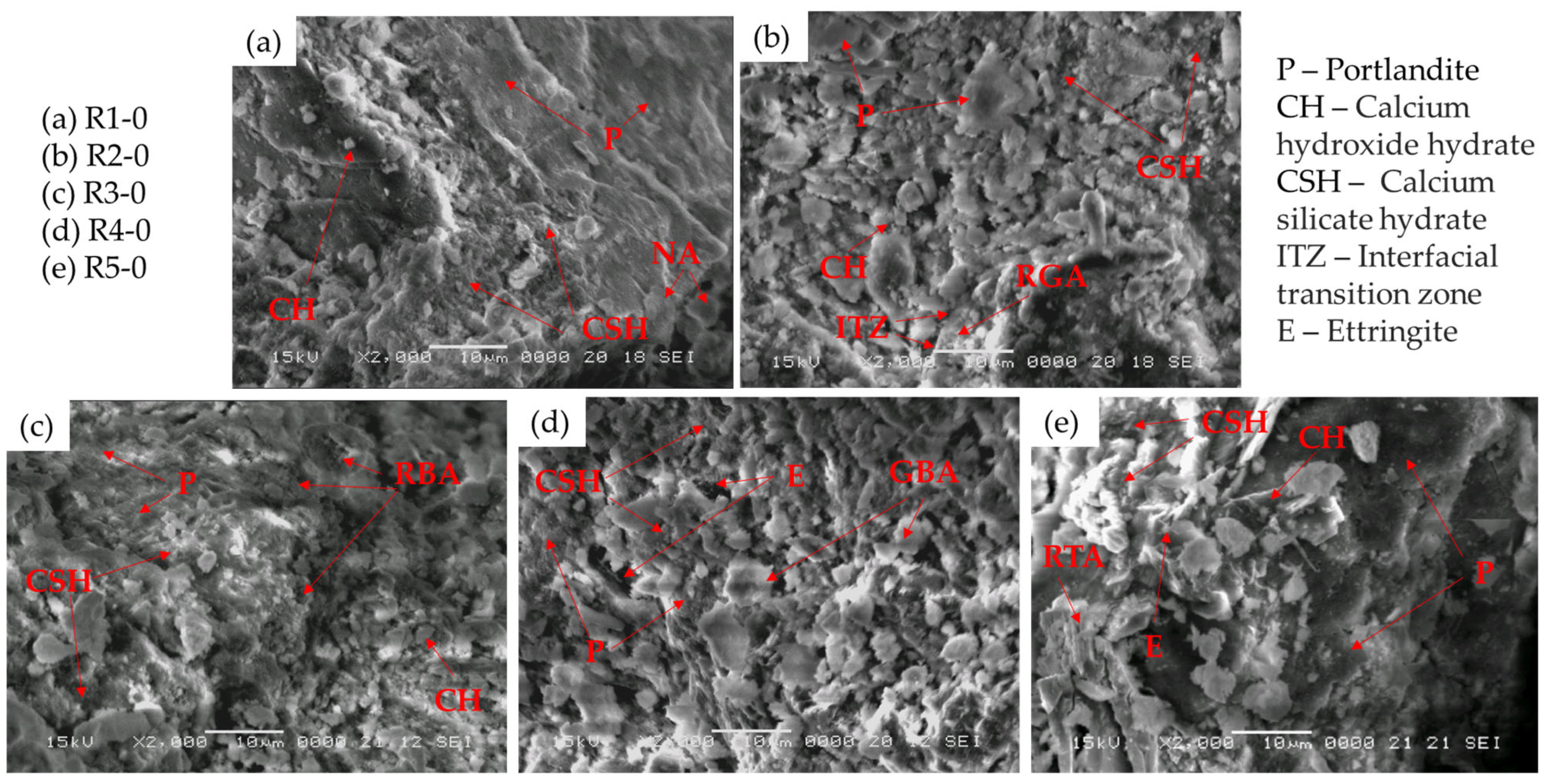
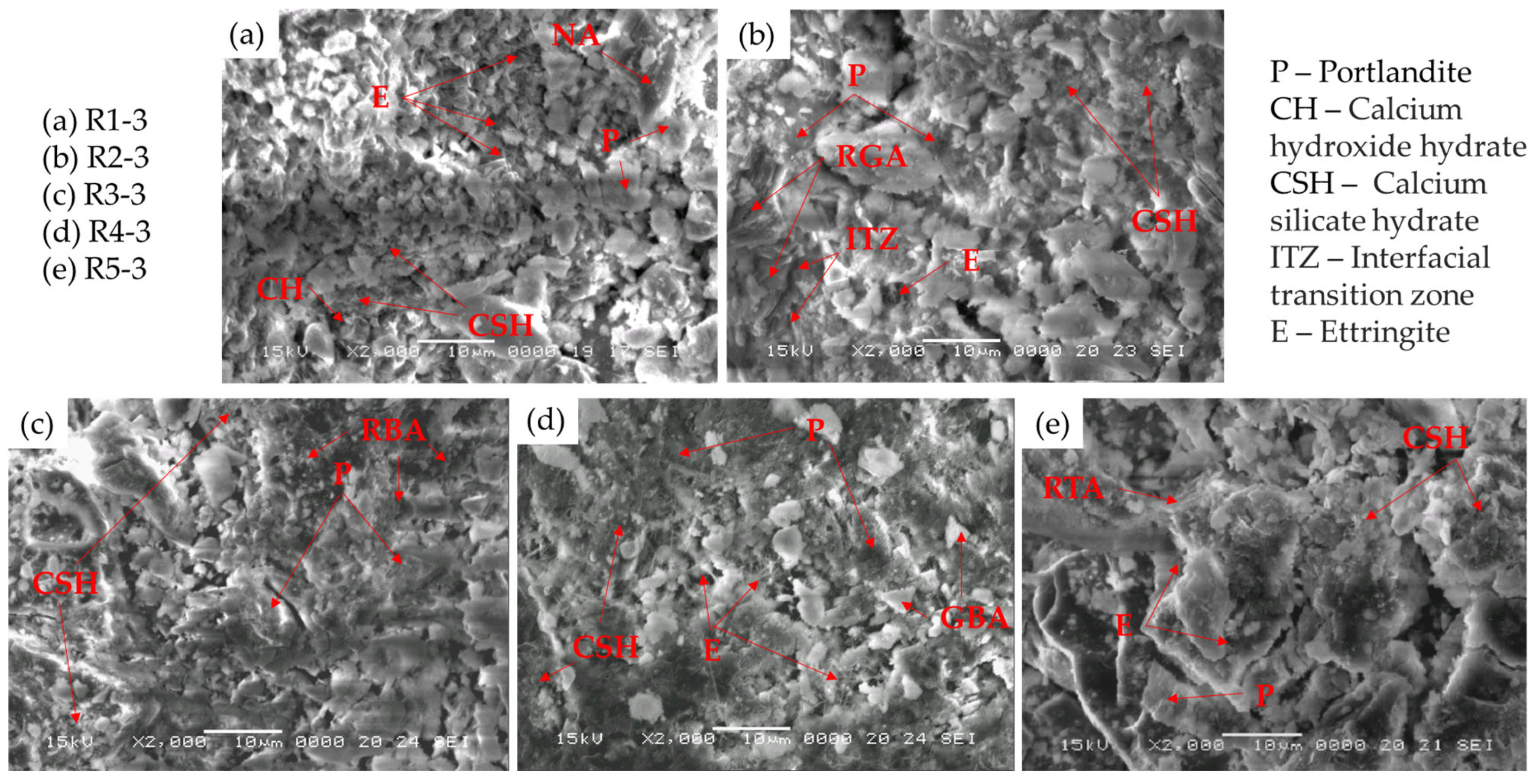

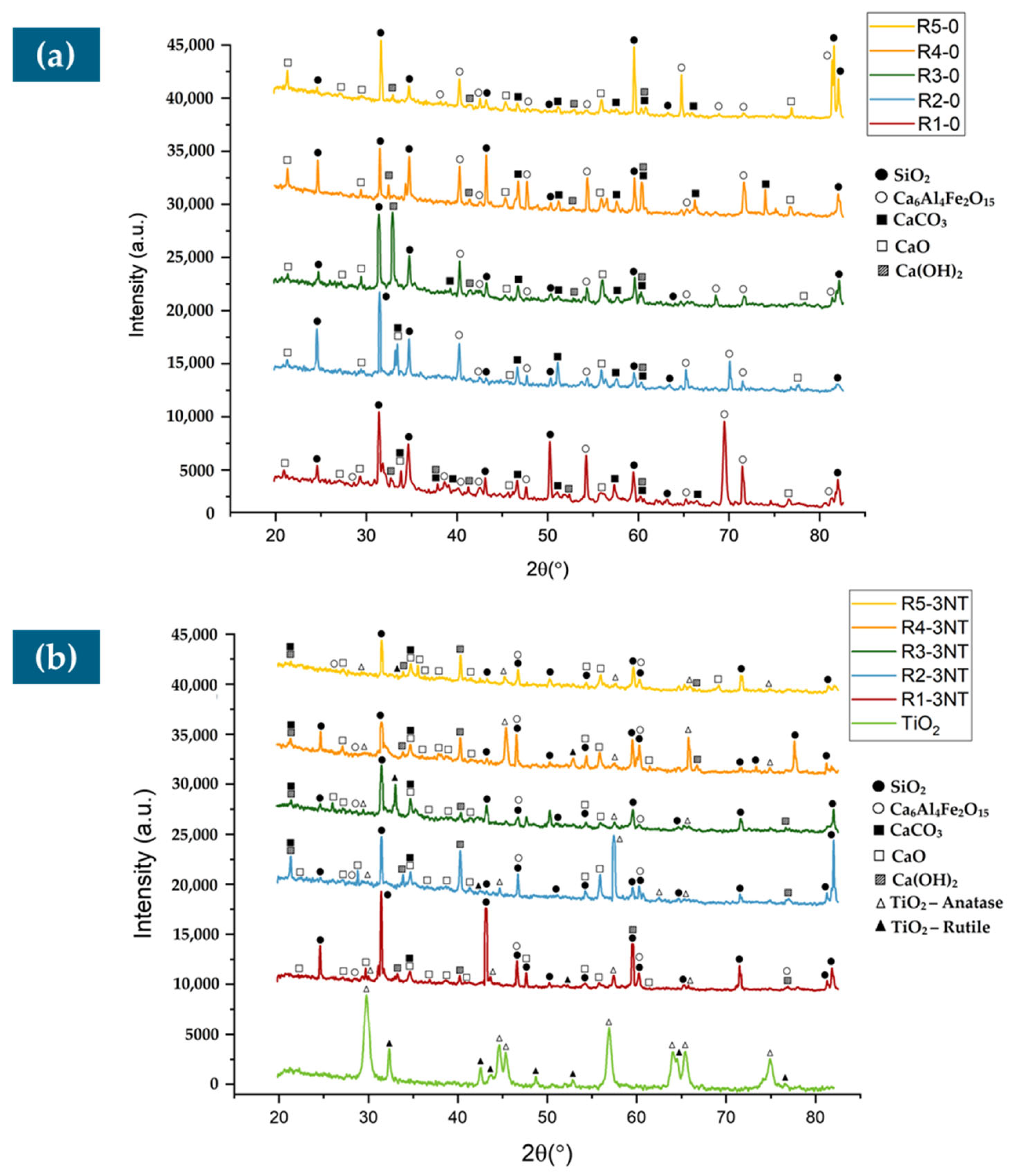
| SiO2 | Al2O3 | Fe2O3 | CaO | MgO | SO3 | Na2O | K2O | P2O5 | TiO2 | Cr2O3 | Mn2O3 | P.C. | |
|---|---|---|---|---|---|---|---|---|---|---|---|---|---|
| w% | 30.20 | 10.05 | 14.70 | 37.40 | 4.05 | - | 0.20 | 0.38 | - | <0.52 | <0.05 | 2.15 | - |
| As | Ba | Cd | Cr | Cu | Hg | Mo | Ni | Pb | Sb | Se | Zn | |
|---|---|---|---|---|---|---|---|---|---|---|---|---|
| mg/kg | 2.85 | 603.8 | <0.03 | 18.2 | 1064 | <0.003 | <3.0 | <0.20 | <0.30 | <0.5 | <0.015 | 12.59 |
| Mixture Code | Design Class | Water/ Cement Ratio | Cement (kg/m3) | Natural Aggregates, Cumulative (kg/m3) | Natural Aggregates, 0/4 mm (% of Total Aggregates) | Natural Aggregates, 4/8 mm (% of Total Aggregates) | MasterEase 5009 Superplasticizer Additive (% Mass Ratio to Cement Quantity) |
|---|---|---|---|---|---|---|---|
| R1 | C 20/25 | 0.6 | 366 | 1577 | 70 | 30 | 0.5 |
| Code | w/c Ratio | Apparent Density (kg/m3) | Flexural Strength (N/mm2) | Compressive Strength (N/mm2) | Abrasion Resistance (% Mass Loss) | Coefficient of Water Absorption by Capillarity (kg/m2min0.5) |
|---|---|---|---|---|---|---|
| R1-0 | 0.60 | 2298 | 8.27 | 59.18 | 5.71 | 0.16 |
| R1-2 | 0.61 | 2468 | 8.32 | 60.03 | 5.24 | 0.10 |
| R1-3 | 0.62 | 2453 | 8.72 | 60.73 | 3.16 | 0.09 |
| R1-4 | 0.62 | 2411 | 8.71 | 59.38 | 2.64 | 0.04 |
| R1-5 | 0.63 | 2405 | 8.92 | 59.04 | 2.40 | 0.03 |
| R2-0 | 0.60 | 2262 | 8.24 | 56.93 | 3.41 | 0.09 |
| R2-2 | 0.61 | 2282 | 8.22 | 56.98 | 3.19 | 0.09 |
| R2-3 | 0.62 | 2287 | 8.28 | 57.47 | 3.13 | 0.08 |
| R2-4 | 0.62 | 2291 | 8.24 | 57.43 | 3.56 | 0.08 |
| R2-5 | 0.63 | 2307 | 8.03 | 56.47 | 3.36 | 0.07 |
| R3-0 | 0.61 | 1993 | 8.31 | 57.75 | 5.12 | 0.27 |
| R3-2 | 0.62 | 2035 | 8.38 | 57.79 | 5.09 | 0.25 |
| R3-3 | 0.63 | 2111 | 8.64 | 58.87 | 4.91 | 0.12 |
| R3-4 | 0.64 | 2131 | 8.51 | 58.04 | 4.83 | 0.11 |
| R3-5 | 0.64 | 2095 | 8.40 | 58.23 | 4.96 | 0.09 |
| R4-0 | 0.61 | 2246 | 9.67 | 68.96 | 4.93 | 0.08 |
| R4-2 | 0.62 | 2332 | 9.78 | 69.01 | 4.33 | 0.04 |
| R4-3 | 0.63 | 2331 | 10.17 | 69.55 | 4.45 | 0.03 |
| R4-4 | 0.64 | 2324 | 10.47 | 70.13 | 4.19 | 0.03 |
| R4-5 | 0.65 | 2334 | 10.40 | 69.88 | 4.68 | 0.04 |
| R5-0 | 0.62 | 2054 | 8.15 | 37.58 | 4.68 | 0.37 |
| R5-2 | 0.64 | 2059 | 8.32 | 43.31 | 4.55 | 0.34 |
| R5-3 | 0.64 | 2083 | 8.50 | 43.68 | 4.23 | 0.16 |
| R5-4 | 0.65 | 2072 | 8.51 | 43.30 | 4.76 | 0.14 |
| R5-5 | 0.65 | 2077 | 8.06 | 35.19 | 5.17 | 0.11 |
Disclaimer/Publisher’s Note: The statements, opinions and data contained in all publications are solely those of the individual author(s) and contributor(s) and not of MDPI and/or the editor(s). MDPI and/or the editor(s) disclaim responsibility for any injury to people or property resulting from any ideas, methods, instructions or products referred to in the content. |
© 2024 by the authors. Licensee MDPI, Basel, Switzerland. This article is an open access article distributed under the terms and conditions of the Creative Commons Attribution (CC BY) license (https://creativecommons.org/licenses/by/4.0/).
Share and Cite
Florean, C.T.; Vermeșan, H.; Gabor, T.; Neamțu, B.V.; Thalmaier, G.; Hegyi, A.; Csapai, A.; Lăzărescu, A.-V. Influence of TiO2 Nanoparticles on the Physical, Mechanical, and Structural Characteristics of Cementitious Composites with Recycled Aggregates. Materials 2024, 17, 2014. https://doi.org/10.3390/ma17092014
Florean CT, Vermeșan H, Gabor T, Neamțu BV, Thalmaier G, Hegyi A, Csapai A, Lăzărescu A-V. Influence of TiO2 Nanoparticles on the Physical, Mechanical, and Structural Characteristics of Cementitious Composites with Recycled Aggregates. Materials. 2024; 17(9):2014. https://doi.org/10.3390/ma17092014
Chicago/Turabian StyleFlorean, Carmen Teodora, Horațiu Vermeșan, Timea Gabor, Bogdan Viorel Neamțu, Gyorgy Thalmaier, Andreea Hegyi, Alexandra Csapai, and Adrian-Victor Lăzărescu. 2024. "Influence of TiO2 Nanoparticles on the Physical, Mechanical, and Structural Characteristics of Cementitious Composites with Recycled Aggregates" Materials 17, no. 9: 2014. https://doi.org/10.3390/ma17092014
APA StyleFlorean, C. T., Vermeșan, H., Gabor, T., Neamțu, B. V., Thalmaier, G., Hegyi, A., Csapai, A., & Lăzărescu, A.-V. (2024). Influence of TiO2 Nanoparticles on the Physical, Mechanical, and Structural Characteristics of Cementitious Composites with Recycled Aggregates. Materials, 17(9), 2014. https://doi.org/10.3390/ma17092014







